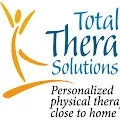0:00
Hey guys, Tony here again. So this is a quick follow-up to the last video I shared. If you didn't see the first video, I'll link to it in the description. But I wanted to tell you exactly what we did, literally 60 minutes after a manipulation under anesthesia. So my patient came in. He was walking independently. He wasn't using an assisted device, but even if he was, the first thing that we did was we went over to one of these high chairs that's kind of angled back. I don't like to mobilize a knee when my patient's
0:30
laying down. I like them to be sitting up. I like the seat to be high enough so that their foot
0:34
can be suspended or supported by me. So I worked on some flexion. I worked on some extension. We took a
0:40
range of motion measurement. He was able to achieve 94 degrees here in the clinic. An hour ago
0:47
under anesthesia, he was at 120, 125. So we did about 10 to 12 minutes, maybe 15 minutes of
0:55
gentle range of motion activities. Then we went over to the bench. If you've seen my other videos
1:02
I had him sit on the bench. We put the surgical leg up on the bench. He did the rolling pin
1:06
massage. He had never done the rolling pin massage. He had been to other physical therapy clinics
1:11
They did it different ways. There was no right or wrong. But we did about three to five minutes
1:16
of rolling pin massage on the upper thigh, the sides of the thigh where the IT band is and down into
1:21
the calf. He loved it. Said it felt really, really good. really, really relaxing, help to move some of the fluid out
1:28
So my home exercise program prescription is I advised him to do three to five minutes
1:36
three times a day, rolling pin massage over the next couple days
1:40
And then what we did next was something that a lot of people still don't do. So I asked him if he had been kneeling on any kind of soft compliance service and he hadn So I gave him the education about kneeling about how to do it safely how to do it correctly But immediately we went over to I got a big kind of cushy chair We had him
2:01
surgical knee that had just been manipulated, knee on the chair, other foot on the floor
2:07
holding on to the backrest of the chair and applying pressure into the knee. So it sounds intimidating
2:13
And one of the things that he realized was he hadn't realized how sensitive the incision had been
2:18
even though surgery was around 12 weeks ago. He had a first manipulation about six or five weeks ago
2:27
and then this was his second manipulation today. But the idea is I wanted him to start getting comfortable in that kneeling position
2:34
and I recommended two things for a home program. I said, go ahead and get a rolling pin, do the rolling pin massage
2:40
the way we did it here in the clinic, three times a day, three to five minutes per episode
2:45
And then I said, go ahead and start to put yourself, in that hands and knees position on your bed, on your couch
2:53
allow yourself to feel some pressure on a deep, soft, compliant surface through the knee
2:58
Because what that does is it helps to translate the tibial bone, the tibia
3:02
posterior, which always improves knee flexion. His extension was amazing. He didn't have to worry about extension, but the flexion was limited
3:11
He got to 94 degrees, if I didn't say it already. So that was it
3:15
And then we finished on what's called an arc trainer. kind of like an elliptical
3:19
We did four or five minutes on the arc trainer. It was about a 30 minute session
3:24
It built confidence. He left feeling better than when he came in
3:28
That's my ultimate goal. We got some initial range of motion measurements. And now I'm gonna see him every day
3:32
over the next five to 10 days. And we'll just track progress
3:36
And I'll try to update you guys so you can follow along in the journey
3:40
because I know a lot of you are struggling with range of motion. A lot of you have had or may have a manipulation
3:46
under anesthesia. And I just try to give you guys much information as I can. Thanks for watching


